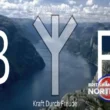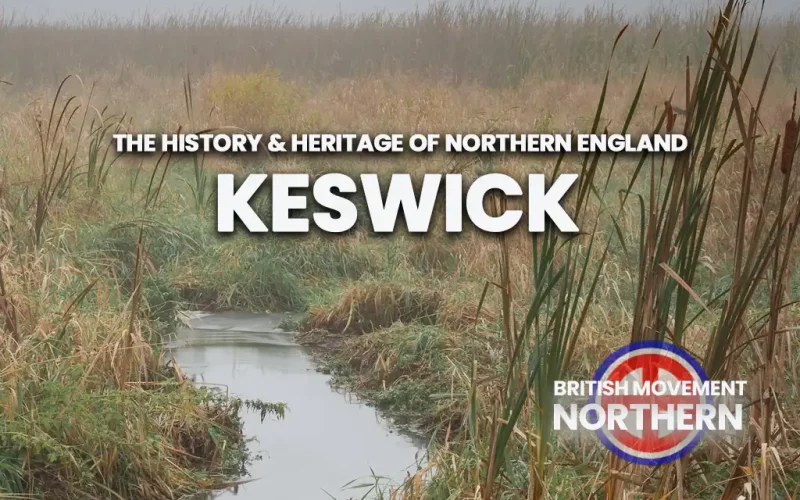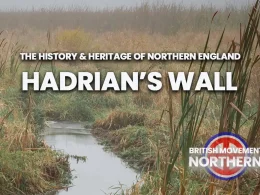Image: The beautiful town centre of Keswick.
Although Keswick is a small town, with a permanent population of less than 5,300, the settlement has existed for centuries, if not millennia.
The area was certainly settled during the Stone Age, and close to the town the Castlerigg Stone Circle is estimated to be 4,000 years old.
From the Iron Age to the period of the Roman Occupation of northern Britain, the area was dominated by the Celtic tribe of the Carvetti, and a number of place names in the area have a Celtic origin, including the River Derwent. The Romans showed little interest in the settlement, their main focus being on Hadrian’s Wall further north.
The Anglo-Saxon takeover of what became northern England saw ‘Cese-wic’ the “cheese town” taken into the Kingdom of Northumbria. This was to last until the late 9th Century when Viking incursions eventually saw Northumbria taken into the control of the Danelaw. There are many local placenames around Keswick with Norse origins.
There are still disputes amongst linguistic academics as to the true origins of the name Keswick. Some insist that it is the Anglo-Saxon (Old English) ‘Cese-wic’ – the town where cheese is made/sold. Others insist it derives from Old Norse or Danish – ‘Kell’s place at the bend in the river’.
Unfortunately for the town, as with other parts of Cumbria and Northumbria, conflict regularly engulfed it, and in the early 10th Century control was wrested from the Norse warlords and the region became part of the Kingdom of Strathclyde, ruled by the peoples known at the Strathclyde Welsh or Strathclyde Britons.
Effectively the settlement was returned to Celtic influences, but the Norse and Danish villages and farm steads in area remained solidly Scandinavian in culture and language.
The Strathclyde situation was reversed in 1050 when Earl Siward of Northumbria retook the area and the town and brought it back into Northumbria and into the recently unified kingdom of England.
The Norman Conquest of England made little difference to Keswick apart from a change of overlords and the granting of estates in the region to the church. In 1276 King Edward I granted a charter for a market in ‘Kesewick’, principally as a market for cheese and farming produce.
During this medieval period Cistercian monks from Fountains Abbey were granted land in the district and herds of sheep were established introducing wool as another important product for market in Keswick.
From the Tudor period onwards, the town was referred to as Keswicke, the letter ‘e’ eventually being dropped from its name at some point in the 18th Century.
From the reign of Elizabeth I onwards the area became important for mining metals especially lead and copper, much later graphite, the main component of pencils was added to the list of minerals mined in the area, but Keswick remained a small market town.
From the late 18th Century onwards, Keswick increasingly important as a focus for tourism, the growing interest in the Lake District drew visitors to the town and this continues today.
In recent months the media in Cumbria has made much of the settlement of refugees in the districts around Keswick, fortunately the refugees in question are Ukrainian families so that there is no threat to the ethnic/racial makeup of the town.
Keswick can be classed as a White town, the most recent population data shows that the population is 94.8 % White, mostly White British, and this is a town that features as a center for tourism.
The British Movement would love to receive articles for possible inclusion on this site from members and supporters across the North of England. Please remember that we have to operate within the laws of this country – we will not include any content that is against the current laws of the United Kingdom. News reports should be topical and be relevant to the regions covered by this website.












